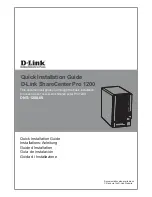
34-27
Cisco ME 3800X and 3600X Switch Software Configuration Guide
OL-23400-01
Chapter 34 Configuring MPLS, MPLS VPN, MPLS OAM, and EoMPLS
Understanding EoMPLS
•
The ingress PE router adds a point-to-point virtual connection label and a label switched path (LSP)
tunnel label for normal MPLS routing through the MPLS backbone.
•
The network core routers use the LSP tunnel label to move the packet through the MPLS backbone
and do not distinguish Ethernet traffic from any other types of packets in the MPLS backbone.
•
At the other end of the MPLS backbone, the egress PE router receives the packet and
de-encapsulates the packet by removing the LSP tunnel label if one is present. The PE router also
removes the virtual-connection label from the packet.
•
The provider-edge router updates the header, if necessary, and sends the packet out the appropriate
interface to the destination switch.
•
The switch supports auto-sense signaling to allow two remote PEs to negotiate VC type signaling.
The MPLS backbone uses the tunnel labels to send the packet between the PE routers. The egress PE
router uses the virtual-connection label to select the outgoing interface for the Ethernet packet. EoMPLS
tunnels are unidirectional; for bidirectional EoMPLS, you need to configure one tunnel in each direction.
The point-to-point virtual connection requires you to configure virtual-connection endpoints at the two
PE routers. Only the provider-edge routers at the ingress and egress points of the MPLS backbone are
aware of the virtual connections dedicated to transporting Layer 2 traffic. Other routers do not have table
entries for these virtual connections.
This section includes additional information about these topics:
•
Interaction with Other Features, page 34-27
•
EoMPLS Limitations, page 34-30
Interaction with Other Features
This section describes how EoMPLS interacts other features. It includes these sections:
•
EoMPLS and IEEE 802.1Q Tunneling, page 34-27
•
EoMPLS and Layer 2 Tunneling, page 34-28
•
EoMPLS and Q in Q, page 34-29
•
EoMPLS and QoS, page 34-30
EoMPLS and IEEE 802.1Q Tunneling
IEEE 802.1Q tunneling enables service providers to use a single VLAN to support customers who have
multiple VLANs, while preserving customer VLAN IDs and segregating traffic in different VLANs. For
more information about IEEE 802.1Q tunneling, see
Chapter 11, “Configuring Ethernet Virtual
Connections (EVCs).”
Figure 34-4
is an example configuration where IEEE 802.1Q-tunneled traffic is forwarded using
EoMPLS over an MPLS network. To support IEEE 802.1Q tunneling in a topology where a Layer 2
device connects to an MPLS network through a switch functioning as a provider-edge device, the ingress
LAN port on the PE that receives the IEEE 802.1Q tunnel-encapsulated traffic (PE1) is configured as a
tunnel port that accepts VLAN 100 traffic. On PE1, the interface is configured for port-based EoMPLS
forwarding, with PE2 as the destination IP address. When packets from VLANs 10 to 50 arrive from
CE1, they are encapsulated in VLAN 100 and sent to the PE1 egress port that is connected to the MPLS
network. At the egress port, an MPLS tag is added to the frame header before it is mapped to a virtual
connection and forwarded to the next MPLS PE (PE2).
















































